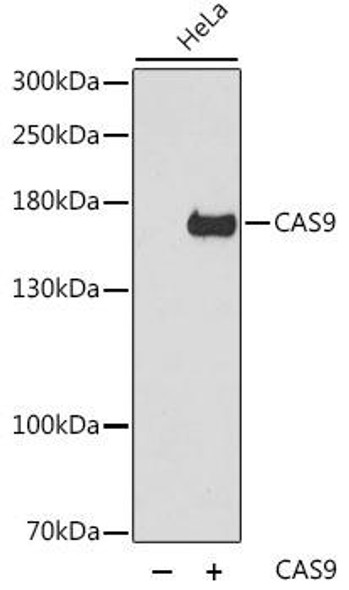CRISPR-associated protein 9 (Cas9) is an RNA-guided DNA nuclease and is a component of the Streptococcus pyogenes CRISPR-antiviral immune system that provides adaptive immunity against extrachromosomal genetic material . The mechanism of CRISPR antiviral action involves three steps: (i) acquisition of foreign DNA by host bacteria; (ii) synthesis and maturation of CRISPR RNA (crRNA), followed by formation of RNA-Cas nuclease-protein complex; and (iii) acquisition of foreign DNA by the host bacterium; The complex recognizes foreign DNA and undergoes directed interference by cleavage by Cas nuclease activity . The type II CRISPR/Cas antiviral immune system provides a powerful tool for precise genome editing and has the potential for specific regulation of genes and therapeutic applications . The Cas9 protein and guide RNA (comprising a fusion between crRNA and transactivating crRNA (tracrRNA)) must be introduced or expressed in the cell. A 20-nucleotide sequence at the 5' end of the guide RNA guides Cas9 to a specific DNA target site. Thus, Cas9 can be "programmed" to cut a variety of DNA sites in vitro and in cells and organisms. The CRISPR/Cas9 genome editing tool has been used in many organisms, including mouse and human cells. Studies have shown that CRISPR can be used to generate mutant alleles or reporter genes in rodent and primate embryonic stem cells.






